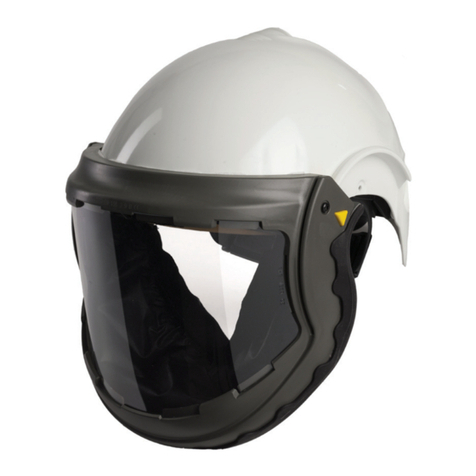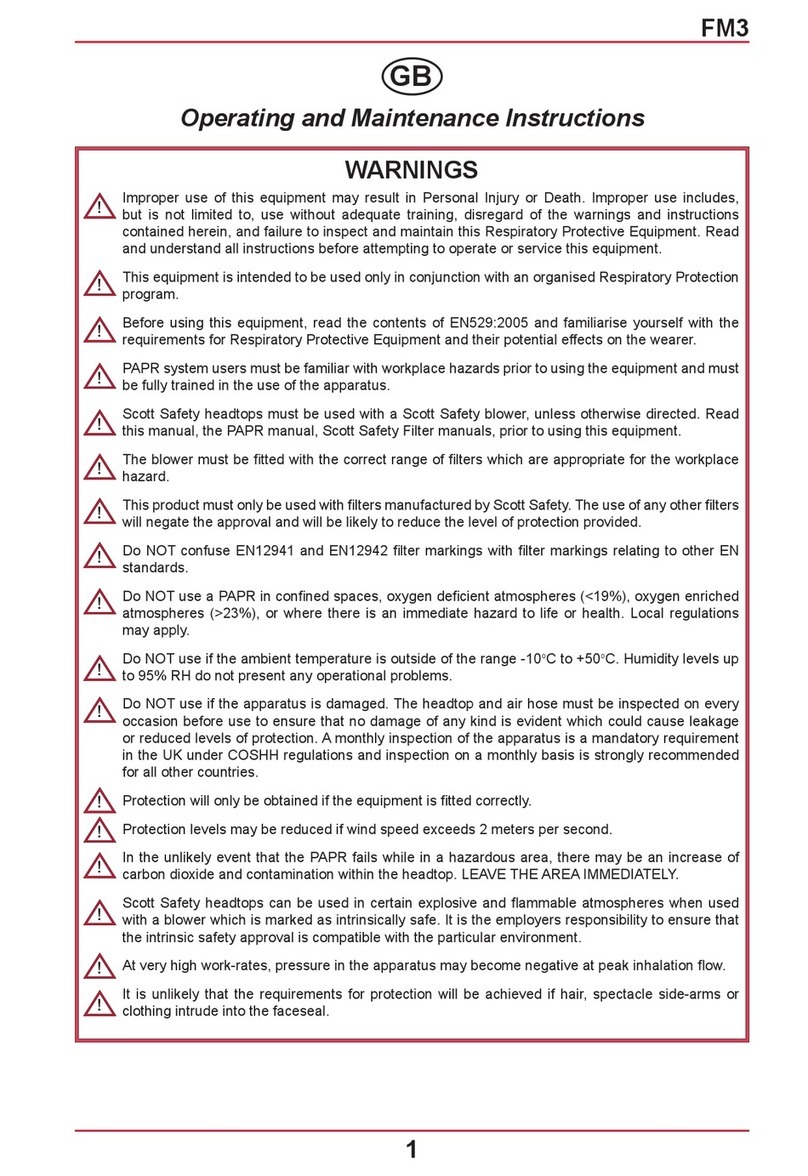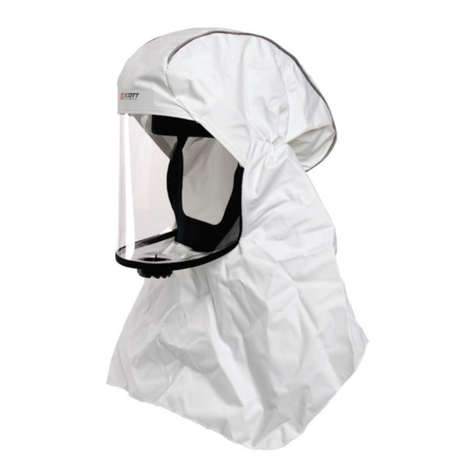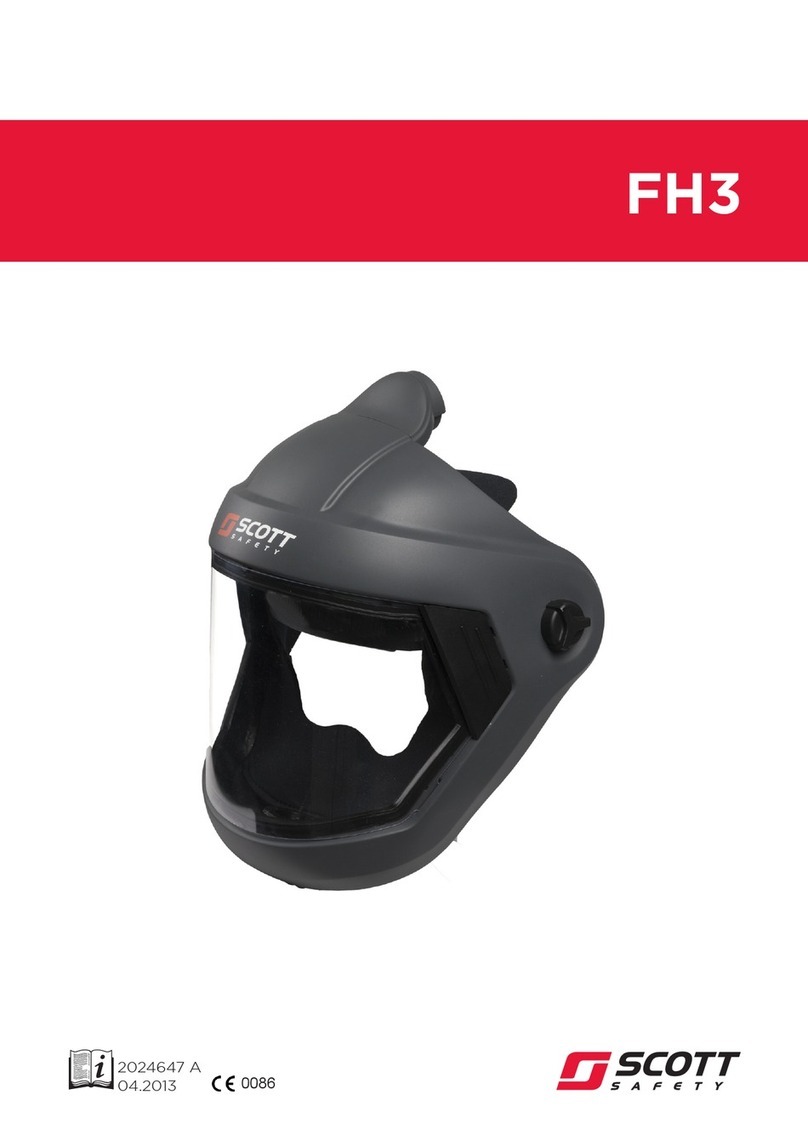
10
FM2
KOPFTEIL
Kopfgeschirr sorgfältig auf Anzeichen
von Beschädigung und Verschleiß
kontrollieren. Achten Sie dabei
insbesondere auf Befestigungen
und Schnallen am Kopfgeschirr,
ebenso Nackengurt, Einatem- und
Ausatemventile, Schlaucheinlass und ori-
nasale Innenmaske.
Überprüfen Sie die Befestigungen
und Schnallen des Kopfgeschirrs auf
Anzeichen von Gummiverschleiss.
Alle Gurte lösen.
Überprüfen Sie, dass sich Kopfteil und
Visier in einem guten, sauberen Zustand
befinden, frei von Beschädigungen
sind und keinerlei Risse oder
Kratzer aufweisen; achten Sie dabei
insbesondere auf die Innendichtungen
der Gesichtsmaske.
Stellen Sie sicher, dass die
Sprechmembran unbeschädigt ist und
keinerlei Löcher aufweist und überprüfen
Sie, dass die ori-nasalen Einatemventile
flach anliegen.
Stellen Sie sicher, dass sich Ein- und
Ausatemventil an ihrem Platz befinden
und sicher befestigt sind.
Stellen Sie sicher, dass sich Visierklemme
und alle Schrauben an ihrem Platz
befinden und sicher befestigt sind.
Untersuchen Sie die Frontabdeckung
und stellen Sie sicher, dass sich die
Sicherungsklemme an ihrem Platz
befindet und sicher befestigt ist.
ÜBERPRÜFUNG DER
ABDICHTUNG AM GESICHT
Bei über das Visier der Gesichtsmaske
geklapptem Kopfgeschirr - auf gute
Abdichtung am Gesicht überprüfen.
Gesichtsmaske mit einer Hand an das
Gesicht heran führen.
Einlassöffnung der Gesichtsmaske mit
der anderen Hand verschließen.
Einatmen und überprüfen, dass sich
die Maske an das Gesicht ansaugt und
solange in Position verbleibt, wie Sie
kurzzeitig den Atem anhalten.
Eine gute Abdichtung am Gesicht wird
dadurch angezeigt, dass die Maske durch
das entstandene Vakuum unverändert in
Position verbleibt.
Verbleibt die Maske nicht in Position, so
kann dies auf Folgendes hinweisen (ist
jedoch nicht auf diese Möglichkeiten
beschränkt):
falsch eingestellte Maske
falsche Maskengröße
defektes Ausatemventil
defekte/beschädigte Maskendichtung.
Liegt eine defekte Maske vor, so ist die
Maske nicht zu verwenden, bevor der
Fehler gefunden und behoben wurde.
Hinweis Die Maske sollte fest am Gesicht
anliegen und keine unnötige Bewegung
aufweisen. Ein zu festes Anziehen führt
zu unbequemem Sitz und kann ein
Verziehen der Gesichtsmanschette zur
Folge haben.
Maske nicht verwenden, wenn kein
bequemes Anliegen erzielt werden kann.
ÜBERPRÜFUNG VOR
GEBRAUCH
LUFTVERSORGUNGSSYSTEM
MIT EIGENANTRIEB
Das PAPR-System muss gemäß Betriebs-
und Wartungsanleitung für das jeweilige
Modell überprüft werden.
Nachdem die Betriebsbereitschaft
aller Teile überprüft wurde, kann das
System in Vorbereitung auf das Anlegen
des Gerätes montiert werden - siehe
Abschnitt Anlegen.





































